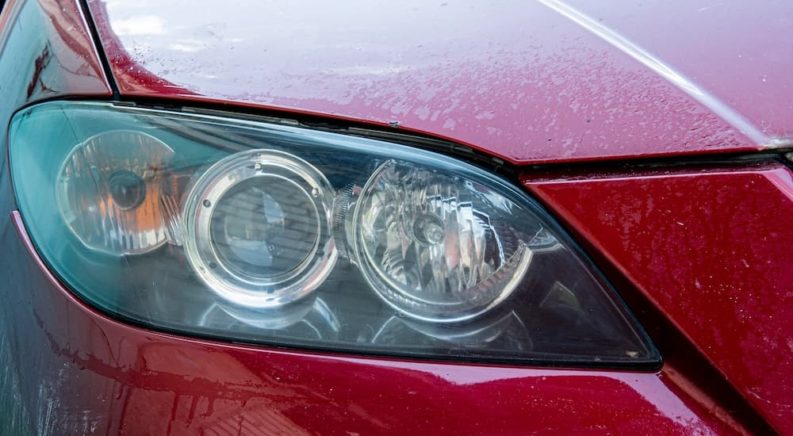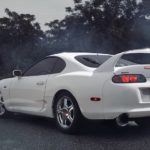For the last few weeks, we’ve looked at my favorite vehicles of the 1970s, 1980s, 1990s, and we are finally heading towards the present. The year 2000 marked the start of a new millennium and had the car industry speeding towards the future. Several factors contributed to a rapidly changing target for automotive makers. Increased awareness of climate change, the implementation of EPA emission standards, and the volatile prices of gasoline meant a new era of vehicles was coming and fast. The early 2000s had a weird mix of vehicle manufacturers that were shifting gears towards an eco-conscious future and vehicle manufacturers who saw the EPA as the enemy in their fight towards peak power. During this time especially, efficiency came at the price of a certain kind of mechanical performance near and dear to the hearts of car enthusiasts. This decade saw a lot of the gas-guzzling super-performers phased out, and these days, shopping at a used Chevy dealer or raiding your grandparent’s garage for their old Ford maybe some of the only ways to get a vehicle that feels more like a machine than a computer. Here are my favorite cars of the 2000s, split into six categories: performance, economy, style, cultural impact, utility, and most interesting.
Performance – 2004 Ford SVT Lightning
Long before the highly-anticipated all-electric Ford Lightning was getting all the hype, its predecessor, the Ford SVT Lightning, was drawing the attention of the car world. The Ford SVT Lightning had a tenure that was short and sweet, running from 1993 to 1995 for the first generation and 1999 through 2004 for the second generation. The second generation was modeled after the tenth generation Ford F-150 (whereas the first generation was modeled after the ninth). A jutted-out lower bumper, a sidestep on the truck bed, and a profile that hugged the road were a few of the main style components that differentiated the Ford SVT Lightning from the Ford F-150. The main difference, however, was in the truck’s function. It was outfitted with upgraded Bilstein shocks, 18-inch wheels, and a supercharged 5.4-liter V8 that got a track-friendly 380 hp and 450 lb-ft of torque. The Ford SVT Lightning is a true original, a truck that wants to race more than it wants to tow.
Economy – 2008 Nissan Altima Coupe
The Nissan Altima made big waves in the early 2000s, specifically with the rollout of its third and fourth generations. The third-generation Nissan Altima got a revamped look, increased passenger comfort, and, most importantly, a V6. It went from looking like a generic, late ’90s economy sedan to looking like the Nissan Altima, an aesthetically unique mix between a generic economy sedan and a generic luxury sedan. When the fourth generation debuted in 2006, the body of the Altima was built on a smaller frame, which segued nicely to the 2008 release of the Nissan Altima Coupe. With a low weight on its side and a 3.5-liter V6 under its hood, it could go from 0-60 in 5.8-seconds. A 6-speed manual transmission was standard – a fairly common practice at the time – but in hindsight makes the zippy little coupe that much sportier. It may not have been the souped-up sports car that got people excited, but when they couldn’t afford said souped-up sports car, maybe they weren’t too upset about settling for the 2008 Nissan Altima coupe.
Style – 2007 Mitsubishi Eclipse
It was summer ’08. Her name was Sheila. She drove a Pearl Still Blue 2007 Mitsubishi Eclipse, and I thought it was the coolest thing since sliced bread. Sheila was my older brother’s friend, and whenever I saw her car parked in our driveway, I had to go out and take a peek. It sparkled in the sun and was a huge visual contrast to my mom’s beige and ultra-practical Toyota Corolla. Now, this may be an unpopular opinion to anyone who was personally offended by the rise and fall of the Mitsubishi Eclipse, but the fourth-generation Eclipse was far and away the prettiest.
When the Eclipse first debuted, it was an affordable tuner car with options for all-wheel drive and a turbocharged engine. People loved it. The second-generation kicked off in 1995 and was even better than its predecessor. It all went downhill from there in the driving department, but in 2008 I didn’t have a license, and I certainly didn’t give a hoot about tuning or horsepower. What I liked was the bubbly, sparkly blue car that looked like it was custom-built for Barbie. To this day, I can’t shake the affection I have for the 2007 Mitsubishi Eclipse, which just goes to show that sometimes it’s the memories we attach to cars that make them beautiful.
Cultural Impact – 2003 Toyota Prius
The trailblazing Toyota Prius started gaining traction in the United States when the 2000 Prius NWH11 became the first to be sold outside of Japan. Most people liked cars because of how they drove or how they looked, but the Prius helped shape a new class of car buyers: the eco-conscious driver. The Toyota Prius was basically the first hybrid vehicle that landed on anyone’s radar (sorry, Honda Insight), and it came at a time when climate change and air quality were heavily scrutinized. It became a political symbol of sorts and even garnered a fandom that landed on both sides of the spectrum.
Green-minded celebrities like Leonardo DiCaprio snagged up new Toyota Prii as a way to reduce their carbon footprint, while some conservatives, dubbed “Prius Patriots,” saw the hybrid as a way to reduce dependence on foreign oil. Then in 2003, the Toyota Prius got a hatchback, making it the practical, unstoppable force we know it as today. Although it no longer holds the majority share of the market for hybrid vehicles sold in the United States, the Toyota Prius remains iconic for the key role it played in the expansion of a cleaner, greener vehicle market.
Utility – 2005 Chevy Suburban
One of the most remarkable things about the Chevy Suburban is its claim to the record for the longest-running, consecutive nameplate; the “Suburban” model has been going strong since 1935. The ninth-generation 2005 Chevy Suburban marked 70 years for the SUV, and this was also the first generation to split (in name) from the GMC Yukon, which debuted with the model year 2000. The utility of the Chevy Suburban stems largely from its versatility; it’s offered in a half-ton 1500 and a three-quarter-ton 2500, both of which sport V8s and have availability in 2WD and 4WD. Payload and towing capacity maxed out with the Suburban 2500 4WD at 2,431 lbs and 12,000 lbs, respectively. Some Suburbans had three rows of bench seats which accommodate up to nine people. Its cargo capacity was 131.6 cu.ft. In summary, it’s a vehicle that can hold a whole lot of people and a whole lot of stuff, and it’s been doing it for a whole lot of years.
Most Interesting – Any Year Subaru Baja
Inspired by Baja racing trucks, the Subaru Baja lived hard and fast, sold only from 2003 to 2006. This little wackadoodle car was in a class of its own – not a sedan and not really a pickup, either. It wasn’t fast or particularly well-equipped for off-roading like the Baja trucks that inspired its style, nor does it have the payload and towing capacity of a typical pickup. It was basically a Subaru Outback with an open back, evidenced by the fact that I once mistook a Subaru Outback wagon with the back of the cab hacked off, Truckla style, for a genuine Baja. The Subaru Baja wasn’t designed to drive fast or haul big loads; it was designed to stand out. Unfortunately, the novelty of the car didn’t quite translate to sales. Disappointing sale figures prompted Subaru to lease Baja-designated assembly line space to Toyota so they could make more Camrys. Ouch. It isn’t all bad, though. In some ways, the Baja has aged like a fine wine. So few of them sold that seeing them out in the wild is rare and exciting.




